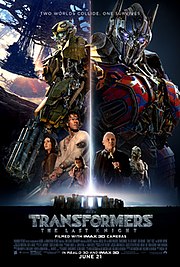
This
reviewer will admit he isn’t the biggest fan of Nintendo’s popular
Pokémon franchise despite being on the autism spectrum like its creator
Satoshi Tajiri, although the announcement that the next set of remakes,
based on
Pokémon Yellow, somewhat captured his attention with the
indication that it would gear towards newcomers, with his experience of
the Fire Emblem franchise being similar before he played
Awakening. In keeping with the series tradition of
One Game for the Price of Two,
the Big N divided the latest remakes into two versions on the Nintendo
Switch, marking the first mainline series release on a home console
(although one can still play it portably). One of the halves of the
gameplay experience,
Pokémon: Let’s Go, Pikachu!, does contain many nods towards first-time players, which is for the most part a good thing.
When
starting the game, the player has a choice of several controller
options, the left or right joycon (effectively making the game playable
with only one hand, perfect for physically-disabled gamers), the Switch
Pokéball, or the handheld screen with both attached joycons, no choice
available of using the console’s joycons together. Consequentially, one
aspect significantly altered is the system of catching new Pokémon, with
monsters visible in and around tall patches of grass and consistently
so throughout dungeons such as caves. Rather than pitting the player’s
primary Pokémon against encountered monsters, the game allows players to
use the motion controls of whatever style they select to throw an
in-game Pokéball (the player mercifully receiving a liberal amount to
start) to try to capture the target.
While the player readies to
throw one of a few types of Pokéball, a ring indicates the rate of
capture success, red being the lowest and green the highest, shrinking
before enlarging. Players can feed prospective Pokémon different types
of berries for effects such as slower shrinking of the capture ring and a
higher success rate of capture. When the player throws their Pokéball
using motion control and hits within the shrinking ring, the game
“scores” their throw, the highest result coming from a capture ring of
minimum size, and no score provided if the player hits the monster
outside the shrinking ring. Sporadically, encountered Pokémon may move
around or make an aggressive move, in which case even hitting it with a
Pokéball will cause it to bounce off with no capture attempt made.
If
the thrown Pokéball manages to suck in the monster, it will fall to the
ground where the Pokémon will struggle up to three times before
breaking out, necessitating recapture, and unfortunately, the quality of
the throw, no matter how great, has no influence upon the success of
capture. Furthermore, the motion controls, this reviewer playing mostly
with one joycon, can be somewhat finnicky when the player throws to the
side (swinging the joycon straight at the screen makes it go forward,
and left and right in those respective directions), although playing the
game on the Switch in portable mode allows the player to move the
screen to allow for a centered Pokéball throw, with most players likely
wishing to only throw straightforwardly, else risk wasting Pokéballs.
Should
the player succeed in capturing a Pokémon, the game, depending upon the
quality of the throw, will award all living monsters in the player’s
party of up to six experience, a definite improvement over prior games
that reserved experience for those mons that actually participated in
combat. Actual battles only come when the player crosses the line of
sight of trainers on routes between towns, in dungeons, and in gyms,
with players first sending in their default Pokémon, in this version’s
case Pikachu, to fight whomever their opponent sends in, with the
options of using one of up to four of a mon’s skills of different types,
using an item, or switching to an inactive monster, which unfortunately
like other series entries wastes the player’s turn, a step down from
the superior character swapping systems in other RPGs such as
Breath of Fire IV and
Final Fantasy X.
After
the player selects a skill for their current Pokémon to use, whoever
has the highest agility (or if a skill comes with striking first)
executes their command firstly, the amount of damage dependent upon a
monster’s type, up to two of which they can have, adding a degree of
strategy present in prior entries. The death of the player’s monster
necessitates them to send out another in its place, although offing the
enemy mon rewards those that participated against it a bulk of
experience, with inactive mons also receiving a share of points for
occasional level-ups, which may come with the opportunity to learn new
skills, or cause an evolution into a more powerful form to occur
(although certain items are necessary to make evolutions manually
occur).
Defeating all an opponent trainer’s Pokémon rewards
players with money usable for purchasing consumables in shops, although
the death of all the player’s monsters results in some lost cash and a
trip to the last recovery facility, where fully restoring mons is
otherwise free of charge. Money is a mildly-finite resource, with
players who wish to play more conservatively likely wanting to make
repeated trips back to recovery facilities should their party suffer at
the hands of opponent trainers instead of using items to heal, although
the game ultimately allows the player to rematch gym leaders for
supplemental monetary gain. In fact, one can potentially make it through
the main quest without using or buying items at all except before the
final adversaries, the Elite Four.
Those who have extensive experience with previous Pokémon titles might find
Let’s Go, Pikachu!
to be easy, although this more casual gamer didn’t think it a total
cakewalk, given the potential unbalance in leveling (which may
necessitate keeping a few dedicated monsters for regular use plus
leveling and minimizing “experimental” mon training) and potential for
one-hit kills either by the player or the enemy. The issue of swapping
mons is also a mark against the game mechanics, with the mon brought in
during the middle of a battle totally vulnerable to the opponent’s
command for a turn, the potential for an OHKO also existing in such a
case. Regardless, the battle system is definitely a step above other
mainline entries, despite its flaws.
Control is generally above
average, with easy (if a tad clunky) menus, nonproblematic shopping, an
always-welcome save-anywhere feature, and few problems figuring out how
to advance the main storyline, the in-game map of the world tracking
visited routes, encountered towns, and the facilities available in them.
Granted, those playing conservatively might find annoying the desire to
constantly return to healing facilities after taxing Pokémon battles,
and there are things that one can easily overlook without a guide or
talking to everyone, such as a Hidden Move (an improvement in
Let’s Go
being that these don’t consume monster move slots) allowing for instant
conveyance between visited towns. On the whole, interaction could have
been better, but isn’t a huge detriment.
The weakest link of the
Pokémon games has most of the time been their narratives, with the
latest round of remakes once more pitting the player’s character against
the sinister Team Rocket, with prominent members being Jessie and
James.
Let’s Go, Pikachu! doesn’t really delve into the
organization’s backstory, and the ending of the plotline is generally
anticlimactic. The translation, however, is largely polish, as most have
come to expect from Nintendo, with only a smidgeon of
slightly-unnatural lines. As one could expect, the story isn’t nearly as
much of a reason to play the
Let’s Go games as much as say, the gameplay.
The
soundtrack, however, definitely takes advantage of contemporary console
technology, with much of it sounding orchestrated, some pieces such as
an early “Polly Wolly Doodle”-esque Route theme sounding whimsical, and
the battle themes being energetic and sometimes toe-tapping. The sound
effects are largely pleasing, with Pikachu’s voiced cries sounding
absolutely adorable, although the unique cries of other Pokémon are
digitized, a few actually sounding like they came straight from prior
incarnations of the series. Still, that doesn’t much detriment a
superb-sounding game.
Let’s Go, Pikachu! further features
some of the best three-dimensional visuals in the current generation of
roleplaying games, very well replicating the artistic style of the
Pokémon anime short of cel-shading, with a noticeable lack of reskins
and believable, reasonably-proportioned character and monster models.
Environmental textures, furthermore, rarely, if ever, appear blurry and
pixilated as they do in other RPGs with similar graphical styles, the
only real issue being some minor jaggies that definitely don’t tarnish a
superb-looking game.
Finally, the game is of reasonable length, one to two days’ worth of total playtime, with the tagline
Gotta Catch Them All goal naturally heightening potential playtime.
In conclusion,
Pokémon: Let’s Go, Pikachu!
for the most part does a great job bringing the series to a new
generation of gamers, given its slightly-more lenient gameplay, and
superb aural and artistic direction. For certain, however, it does have
its issues, such as the potential for unbalanced combat, finnicky motion
controls, some features such as the useful Fly Hidden Move being
overlookable, and the unengaging narrative. Admittedly, furthermore,
those who have extensive experience with prior installments might find
it a cakewalk, but this reviewer believes playing a game should never be
a chore, and would recommend it especially to those having minimal
experience with the series.
The Good:+Solid strategic Pokémon gameplay with improved catching and leveling means.
+Catchy soundtrack.
+Visuals do a superb job replicating the style of the anime.
The Bad:-Can still be a little unbalanced, with motion controls potentially finnicky.
-Some features hard to find without using a guide.
-Story isn’t really engaging.
The Bottom Line:A Pokémon game geared towards newcomers.
Score Breakdown:Platform: Nintendo Switch
Game Mechanics: 8/10
Controls: 7/10
Story: 6/10
Localization: 9/10
Music/Sound: 9/10
Graphics: 9/10
Lasting Appeal: 10/10
Difficulty: Unbalanced
Playing Time: 1-2 Days
Overall: 8.5/10
















:origin()/pre00/f0b6/th/pre/i/2018/345/5/5/khei_as_princess_zelda_by_jmg124-dcu87r8.png)

:origin()/pre00/3ef6/th/pre/i/2018/345/0/7/shenmue_i___ii__playstation_4__review_by_jmg124-dcu7x4x.jpg)
